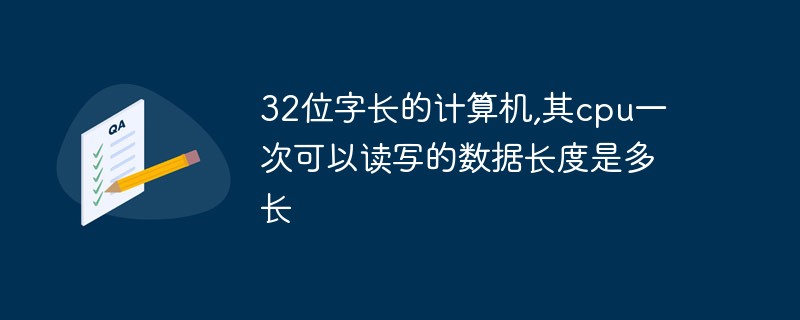Home >Common Problem >For a computer with a 32-bit word length, what is the length of data that the CPU can read and write at one time?
For a computer with a 32-bit word length, the data length that the CPU can read and write at one time is 4 bytes. The definition of word length is "the width of the basic elements processed at one time in an operation"; however, 32-bit processors are not only able to process 32-bit data. Many data in computer applications only require 8 or 16 bits.

The operating environment of this tutorial: Windows 7 system, Dell G3 computer.
For a computer with a 32-bit word length, the data length that the CPU can read and write at one time is 4 bytes.
The most basic storage unit of a computer is Byte, and the smallest storage unit is bit.
A byte is composed of eight-bit binary numbers. From this, we can think that 1Byte=8bit, or that one byte and eight bits occupy the same space.
The 32-bit in the CPU refers to "word length". The definition of word length is "the width of the basic elements processed at one time in an operation." However, 32-bit processors are not only able to process 32-bit data. Many data in computer applications only require 8 or 16 bits. For example, the ASCII code commonly used in text processing only requires 8 bits, and even if unicode is used, it only requires 16 bits. Therefore, 32-bit processors basically have the ability to process shorter-digit data.
For more computer-related knowledge, please visit the FAQ column!
The above is the detailed content of For a computer with a 32-bit word length, what is the length of data that the CPU can read and write at one time?. For more information, please follow other related articles on the PHP Chinese website!